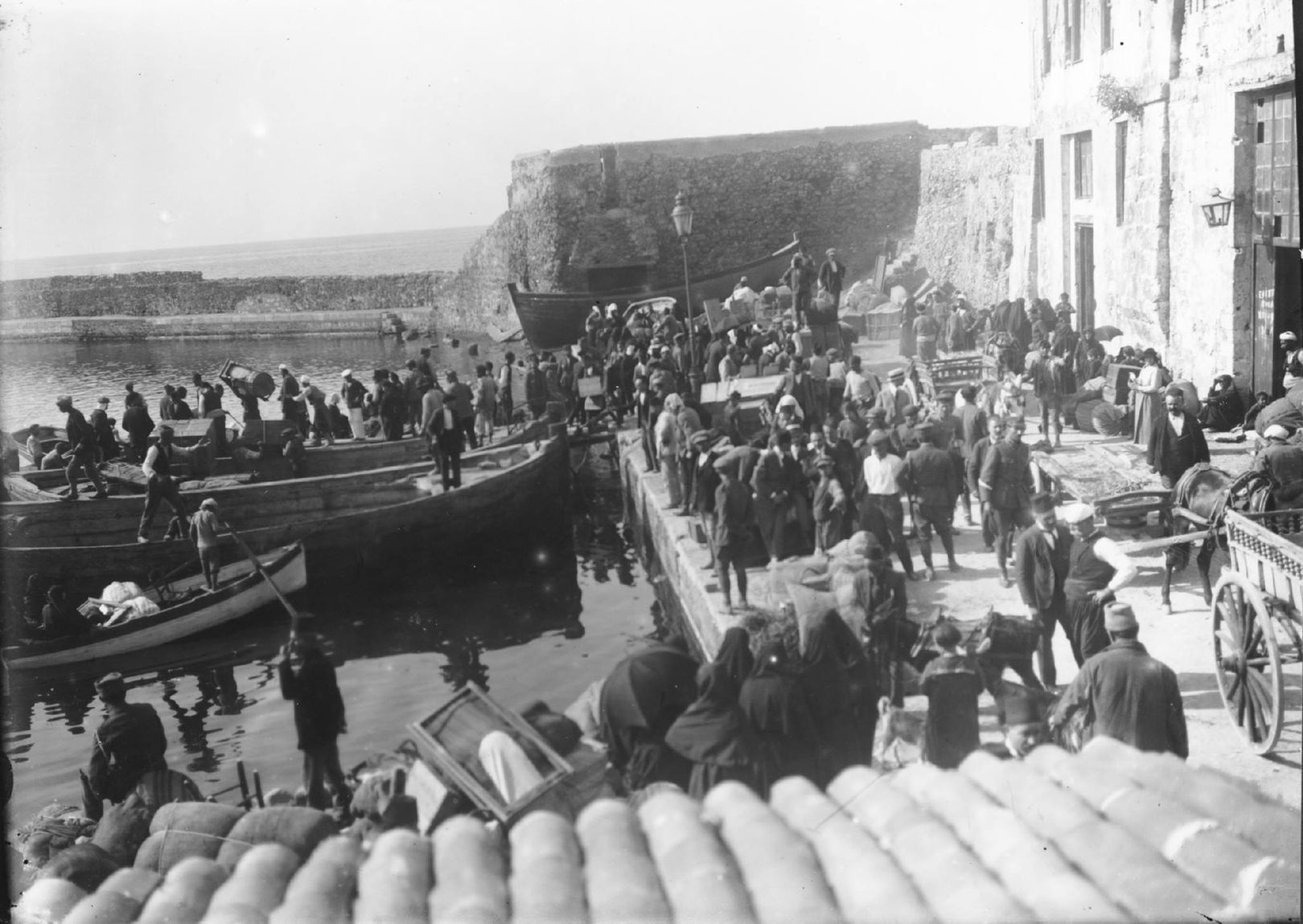The metochi estates
City
Migration Period
City Narratives
Date
Full Description
The metochi estates were located in the Chania plains, in the area south of the city, roughly extending from the village Alikiano to the village Tsikalaria. They were rural estates, probably successors to the fiefs and the Ottoman timars, which operated as autonomous residential and financial units.
At the centre of the estate, there was a building complex where the owner dwelt. In 1874, the traveller H.F. Tozer described these buildings as ‘manors or villas of Turkish officials surrounded by cypresses and pine trees’. Surrounding the complex, there were separate dwellings for the labourers and all the necessary facilities for the running of the estate: warehouses, stables, oil and wine presses, water pumps. The courtyards of the estate manors were usually decorated with impressive flower gardens, open water reservoirs, walking paths, and pavilions used by the owners for entertainment and the hosting of social events.
The buildings on the metochi estates date from different eras and were added over the course of time, as attested by research and demonstrated in the documents drafted by the Ministry of Culture that declare these buildings historical monuments worthy of preservation: a ‘delapidated Venetian mansion’ can be found on the Isychaki estate, ‘a remarkable example of Ottoman architecture influenced by Venetian art’ in the Seresbilia complex, ‘a typical example of local architecture of the end of the 18th century in the Gemit Aga estate.
During the late 19th century and until the population exchange, the metochi estates were independent and dynamic agricultural units which guaranteed their residents’ food security, while systematically yielding surplus crops which could be traded by the metochi owners. Researcher Katerina Karadima, a PhD candidate at the University of Crete, points out: ‘At the end of the 19th century when the cultivation of citrus was introduced and started gaining popularity, the original building complex of almost all the metochi estates expanded outwards towards the periphery of the estate where the citrus trees were planted. The wall system surrounding the citrus trees created a double layer of protection which sometimes covered thousands of square metres. This addition was made for two reasons. The first was the owners’ chronic insecurity due to constant separatist uprisings in the area. […] The second reason was the intensification of agriculture which demanded ever larger investment and more systematic and frequent crop planting’.
The most common crops on the estates at the time were grain and produce to cover the residents’ needs, and then citrus, olive trees, and vines. Animal farming and sericulture were also common, which explains the multitude of mulberry trees grown in and around these estates.
According to the terms of the Lausanne Treaty, these important units of agricultural production were turned into exchangeable lands. Most of the metochi owners were Muslim and several became part of the exchangeable population of Chania. There were, in fact, some among them who had European citizenships and were therefore exempt from the exchange, as were their estates. They stayed on the island until the end of their lives and their estates continued their operation. However, ownership of most of these large expanses of concentrated land, measuring from 70,000 up to more than 1,000,000 square metres, passed on to the state in the form of exchangeable lands and many families settled in their facilities as part of their rural rehabilitation. The buildings on the metochi estates were divided into long rectangular rooms for housing and the land was divided among the families for agricultural uses. The auxiliary facilities, such as the wells, were used communally.
However, the fragmentation of the land and the particular needs of the refugees changed the character of these estates. The co-habitation of multiple families in spaces built to serve the needs of only one proved difficult and it is likely that the economic model of the metochi estate broke down when the land got divided into small plots. In addition, the fact that the land was so close to the city limits encouraged many of the refugees to look for employment there instead of engaging in agricultural activity, which was the original purpose of their rehabilitation.
These were some of the factors that contributed to the steady decline of the metochi estates over the years. After the war, this decline drove many refugees to resettle elsewhere. The history of these estates is attested by the state of their facilities, as most of their buildings on the outskirts of Chania lie derelict and dilapidated. In contrast, the few estates that were not fragmented, but instead continued as intact units and adapted to the demands of modern economy, are now thriving in various forms: as residences, guest houses, or agricultural production units.
Bibliography
Interview with Katerina Karadima, doctoral candidate in Architecture at the University of Crete, conducted by the researcher Katerina Anagnostaki as part of the 100memories project, Chania (18/06/2022)
Angeliki Christaki, The metochi estates as a constituent of agricultural production in Crete. The case of the Isychakis estate in Alikianos, research paper, School of Architecture, University of Crete, Chania, May 2015.
Manolis Manousakas, ‘Photo-retrospectives in old Chania. 147. Kokkino Metochi’, Routes supplement, Chaniotika Nea (04/01/2008)
Argiro Kallivretaki, ‘Metochi estates, Municipality of El. Venizelos’.
G.P. Ekkekakis, Travellers and travel writing on Crete (15th to 20th century), Handmade edition, 2006.
Ministerial Decision dated 10-11-1982, ‘Designation of the agricultural unit belonging to Minoas Isichakis (architecturally designed garden, Venetian oil press, dwellings, surrounding wall) in the area of the Nerokouros village in Chania as a historical monument worthy of preservation’, GG 24/Β/21-1-1983.
Ministerial Decision dated 4-1-1983, ‘Designation of the “Sersebilia” building complex in Perivolia Kydonias in the Municipality of Chania as a historical monument worthy of preservation’, GG 168/Β/8-4-1983.
Ministerial Decision dated 23-12-1997, ‘Designation of the Metochi Yetim – Aga in Vamvakopoulos, Kydonia, Municipality of Chania as a historical monument worthy of preservation’, GG 156/Β/24-2-1998.
